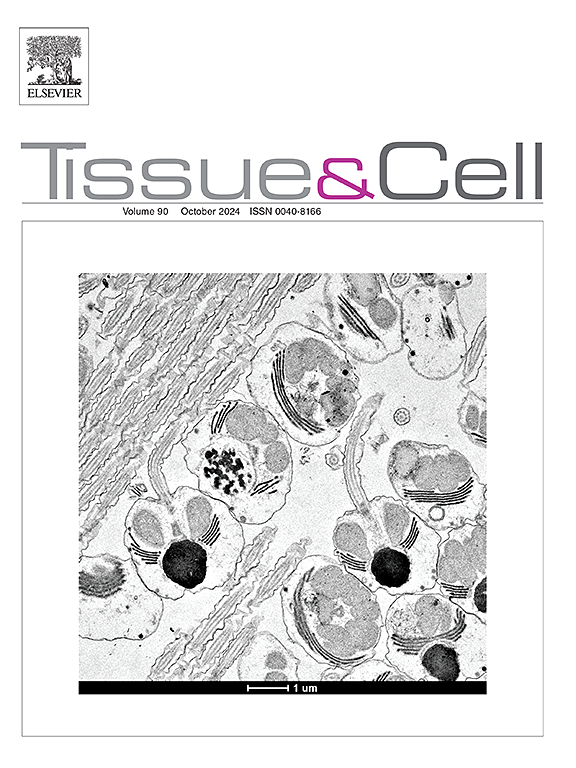Wound-healing effects of frozen-thawed allogeneic fibroblast sheet transplantation and xenogeneic fibroblast cell sheet transplantation cultured on a new substrate
IF 2.7
4区 生物学
Q1 ANATOMY & MORPHOLOGY
引用次数: 0
Abstract
This study aimed to investigate the therapeutic effect of cryopreserved fibroblast cell sheets cultured using new substrates on cutaneous ulcers in a mouse allogenic and xenogeneic model. Since cell sheets are very fragile, transplanting cell sheets requires some ingenuity. This study demonstrates the simplicity of using a new substrate, development code CY-1, a hydrophilic-treated thermoplastic resin film, to perform a series of processes from cell culture and cryopreservation thawing to cell sheet transplantation. In this study, fibroblasts were cultured on CY-1, then frozen with a cell preservation solution using a 3D freezer. Freeze-thawed fibroblasts were transplanted to the target position, and CY-1 was removed at the time of transplant. The freeze-thawed allogenic fibroblast sheets cultured on CY-1 exhibited significantly higher therapeutic effects on cutaneous defects in diabetic C57BL/6 mice compared to those without sheet transplantation (control group), consistent with hair follicle regeneration on day 15. We performed immunostaining on the day 15, and found that the allogenic fibroblast sheets group had significantly fewer CD3-positive cells than in the control group (allogenic vs. control: 302 ± 68.7 vs. 389 ± 30.9 [p = 0.03]). Cell viability and VEGF concentration were similar between freeze-thawed human fibroblasts cultured on CY-1 at 24 hr after thawing compared to nonfrozen human fibroblasts. HGF concentrations significantly increased in freeze-thawed human fibroblasts cultured on CY-1 at 24 hr after thawing compared to nonfrozen human fibroblasts (nonfrozen vs. freeze-thawed: 839 ± 50.6 vs. 1750 ± 118 [p < 0.01]). Freeze-thawed human fibroblast sheets cultured on CY-1 exhibited significantly higher therapeutic effects for cutaneous defects of immunodeficient mice compared to control group. There are significantly more active HGF in the surrounding murine tissue of the xenogeneic fibroblast sheet on the day 2 than those in control group (xenogeneic vs. control: 600 ± 116 vs. 437 ± 71 [p < 0.05]). Therefore, freeze-thawed fibroblast sheets cultured on CY-1 can be effective for refractory cutaneous ulcers in clinical practice.
求助全文
约1分钟内获得全文
求助全文
来源期刊

Tissue & cell
医学-解剖学与形态学
CiteScore
3.90
自引率
0.00%
发文量
234
期刊介绍:
Tissue and Cell is devoted to original research on the organization of cells, subcellular and extracellular components at all levels, including the grouping and interrelations of cells in tissues and organs. The journal encourages submission of ultrastructural studies that provide novel insights into structure, function and physiology of cells and tissues, in health and disease. Bioengineering and stem cells studies focused on the description of morphological and/or histological data are also welcomed.
Studies investigating the effect of compounds and/or substances on structure of cells and tissues are generally outside the scope of this journal. For consideration, studies should contain a clear rationale on the use of (a) given substance(s), have a compelling morphological and structural focus and present novel incremental findings from previous literature.
 求助内容:
求助内容: 应助结果提醒方式:
应助结果提醒方式:


